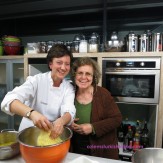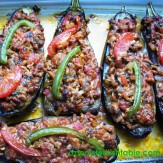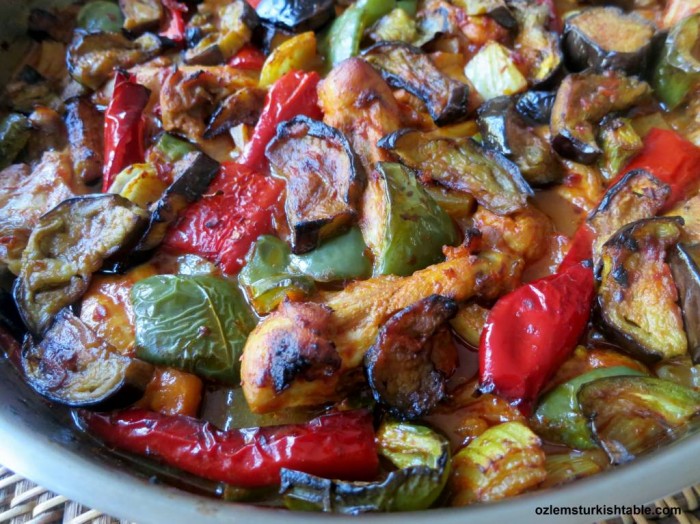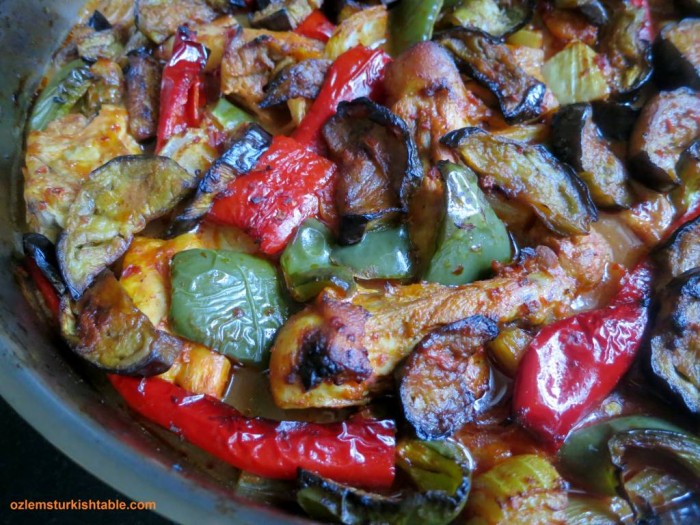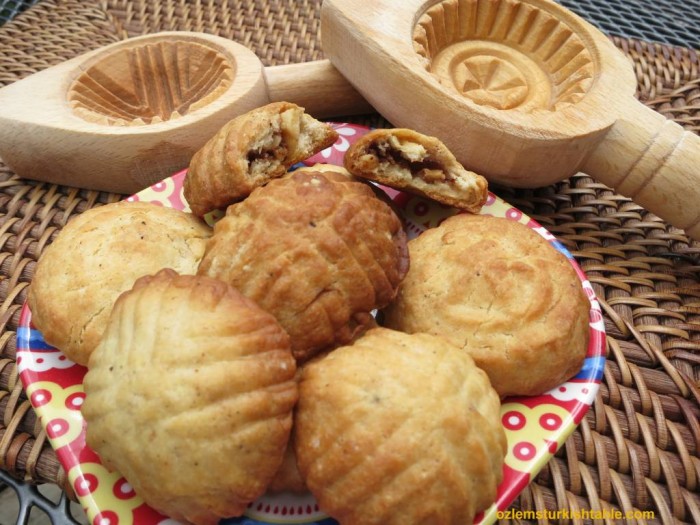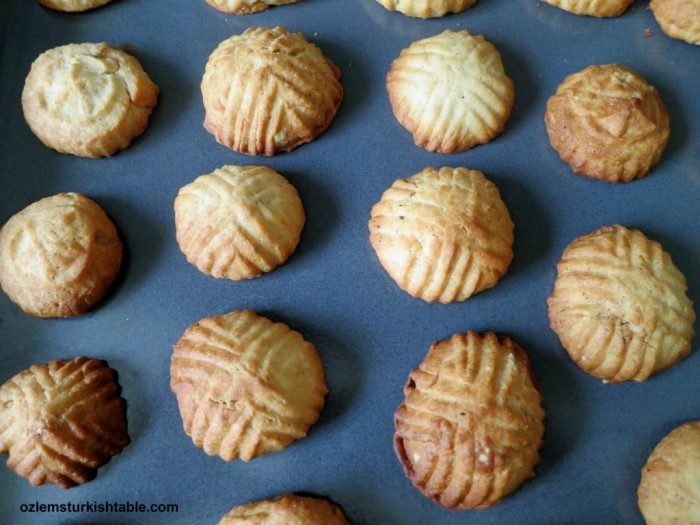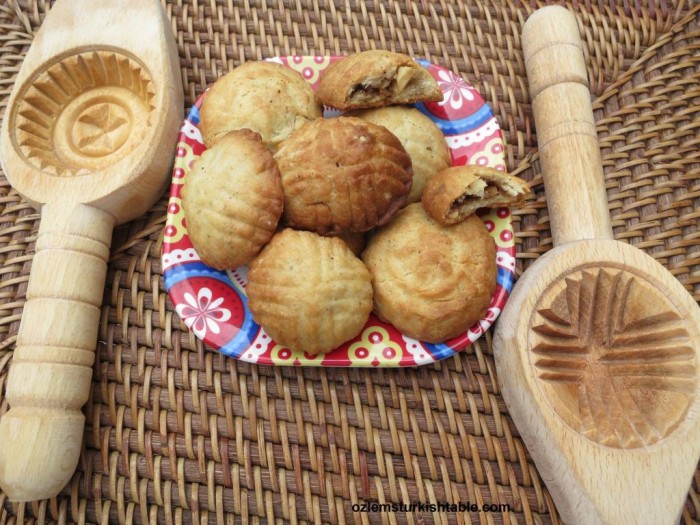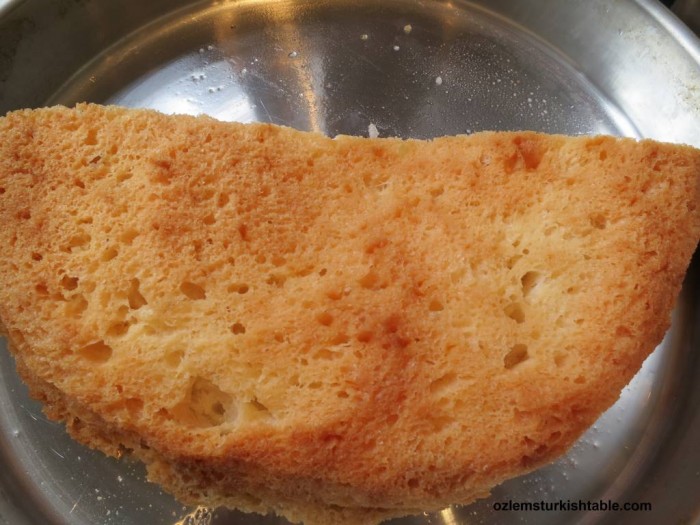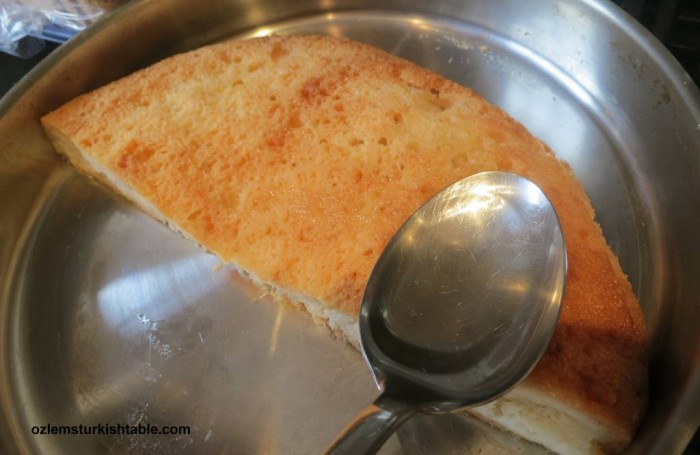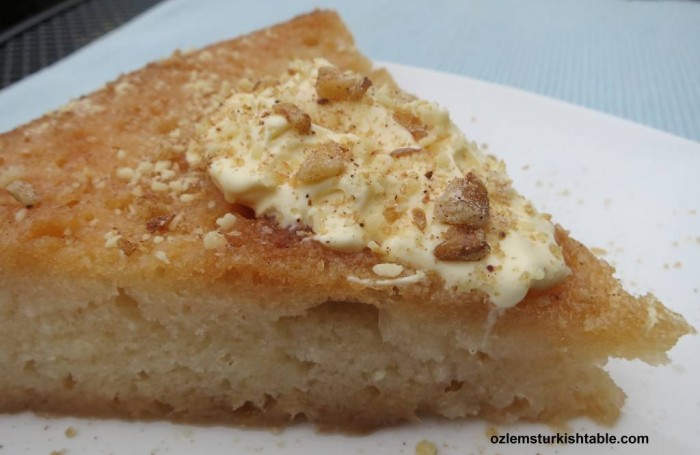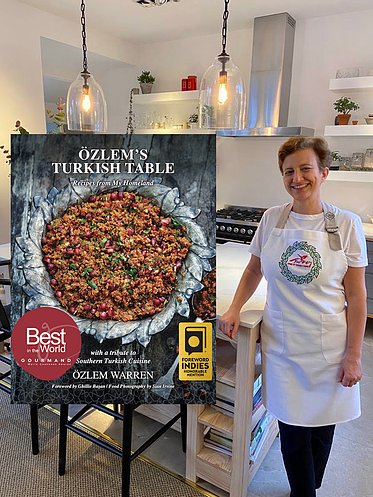Merhaba all; we had a delightful Turkish cookery class recently and this baked eggplant or aubergine kebab with chicken, onions and peppers was a big hit at the class.
This is a southern Turkish style kebab, prepared at homes. The aubergines (eggplants) are double baked in this recipe, Southern Turkish style, which intensify their flavor. In Southern part of Turkey, especially in the regions of Gaziantep and Antakya, locals would use up the left over grilled or barbecued eggplants to make this delicious, home style kebab the next day. A tradition in Antakya is to prepare the kebab at home and take the tray to the local bakery to be baked in the wood fired oven, providing amazing, melt-in-the mouth flavors. I hope you enjoy recreating this lovely, impressive dish in your home for family and friends.
Tip: Marinating the chicken in yoghurt, olive oil, Turkish hot pepper paste, biber salcasi and spices is really well worth the effort; it tenderizes the chicken and enables the flavors to blend well.
You can make a vegetarian version of this kebab, using a variety of vegetables (aubergines, courgettes, peppers, carrots etc) and including cooked chickpeas, as in Baked Vegetables and chickpeas, Firinda Sebzeli, Nohutlu Turlu, as in my book, SEBZE, equally delicious, you can get copies here.

I hope you enjoy it, Afiyet Olsun,
Ozlem
- 3 medium aubergines (eggplants)
- 700 gr / 1.5 lb. chicken thighs or chicken breast, skinned and cut in 4x4 cm (1.6” x 1.6”) chunks
- 2 red Romano (pointy) or bell peppers, deseeded and sliced in chunks
- 1 green (pointy or bell) pepper, deseeded and sliced in chunks
- 1 medium onion, coarsely chopped
- 45 ml / 3 tbsp. olive oil
- Salt and ground black pepper to taste
- For the chicken marinade:
- 2 garlic cloves, finely chopped
- 30 ml/ 2 tbsp. plain whole milk yoghurt
- ½ tbsp. tomato paste
- ½ tbsp. Turkish hot pepper paste (optional)
- 5 ml/ 1 tsp red pepper flakes
- Salt and ground black pepper to taste
- 15 ml / 1 tbsp. olive oil to sauté the marinated chicken
- For the sauce:
- ½ tbsp. red pepper paste or 1-2 tsp. red pepper flakes
- ½ tbsp. tomato paste
- 12 fl. oz. / 1 ½ cup water
- Preheat the oven to 180 C/ 350 F
- Peel the aubergines (eggplants) in zebra stripes, using a vegetable peeler or a small knife. Cut the aubergines in lengthways then in 1cm (0.4”) thick slices. Place the slices on a tray and sprinkle salt over them (The salt will help extract the bitter juices out of the aubergines). Set aside for 15 minutes.
- Prepare the marinade for the chicken. Place the chicken pieces in a large bowl. Stir in the yoghurt, garlic, olive oil, tomato paste, red pepper paste (if using) and red pepper flakes. Season with salt and ground black pepper to your taste and combine and mix the chicken pieces with the marinade. Cover the marinade and leave in the fridge for 30 minutes (you can prepare this marinade ahead of time, even overnight and leave in the fridge).
- Using kitchen paper towel, squeeze the excess moisture out of the aubergines. Place the aubergines on a tray and drizzle 3 tbsp. olive oil over them. Coat the pieces with the olive oil and partially bake in the preheated oven for 15 - 20 minutes, until starting to char around the edges.
- Heat the olive oil in a large heavy pan and stir in the marinated chicken pieces. Sauté over medium to high heat for 4 – 5 minutes, turn the heat off.
- Once the aubergine slices partially baked, prepare the chicken & aubergine bake with vegetables. In a large baking dish, place a chicken piece next to onion, pepper (alternating red and green pepper pieces) and aubergine slices. Keep on placing chicken and vegetables in this order side by side, until all the chicken and vegetables are layered. Spread any remaining aubergine slices at the top.
- To prepare the sauce, stir in the red pepper paste, tomato paste, red pepper flakes and the water to the pan used for sautéing the chicken. Combine all, also using any leftover chicken marinade sauce in the pan. Pour in this mixture over your tray with the chicken, aubergine and vegetables.
- Bake in the oven for 40 - 45 minutes, until chicken and vegetables are cooked and turned light golden color.
- Serve hot with plain rice or bulgur pilaf aside.


